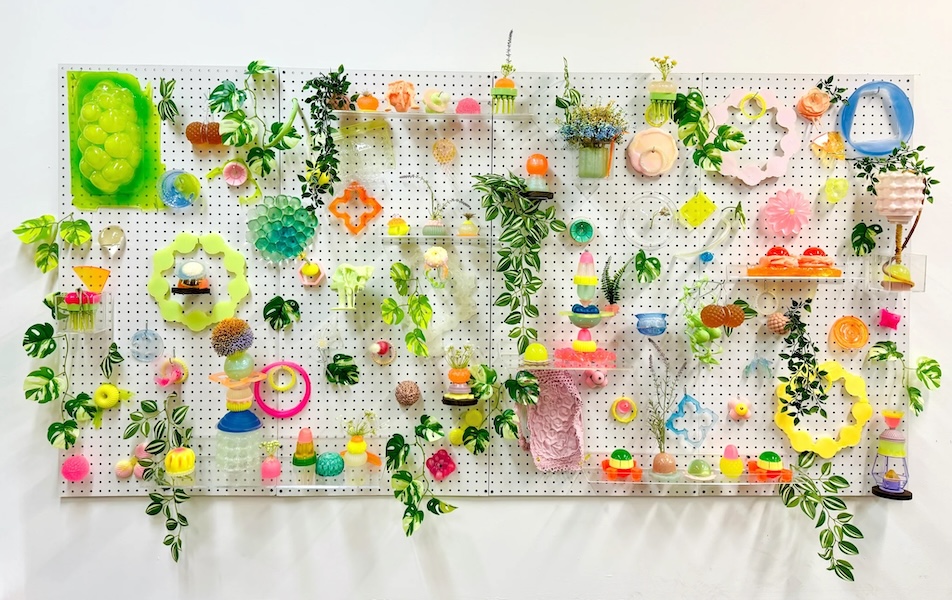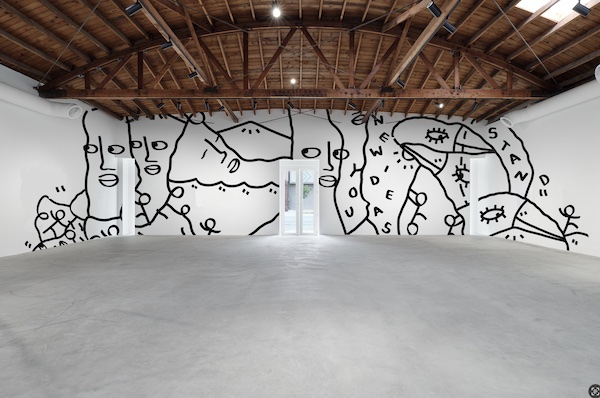For our upcoming fall issue, we interviewed Latifa Echakhch during her install of “À chaque stencil une revolution (For each stencil a revolution)” and “Illuminaire” for Hammer Projects in Los Angeles. Born in Morocco and raised in France, Echakhch questions and reconstructs stereotypes through objects found in quotidian life.
Since 2009, she has resided in Switzerland. This artist floats between cultures, not allowing herself to be pigeonholed into any category. Recently nominated for the 2013 Marcel Duchamp Prize, her installation and video work is bold, understated, colorful, elegant and political. We spoke with curator Anne Ellegood about Echakhch’s work.
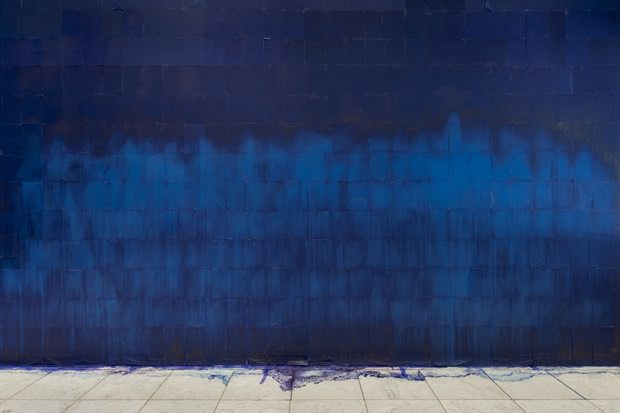
Installation View
WHITEWALL: How did you choose Latifa Echakhch to be part of Hammer Projects?
ANNE ELLEGOOD: I actually saw an installation of the piece that we currently have in the lobby in Torino, Italy a couple of years ago. It just took my breath away. The lobby wall is usually a space where we commission new work. But, the nature of Latifa’s piece is that it shifts and adapts to its space. It’s a new installation of that work. But I just thought it would be so stunning on our lobby wall that I kind of just had to have it (laughs).
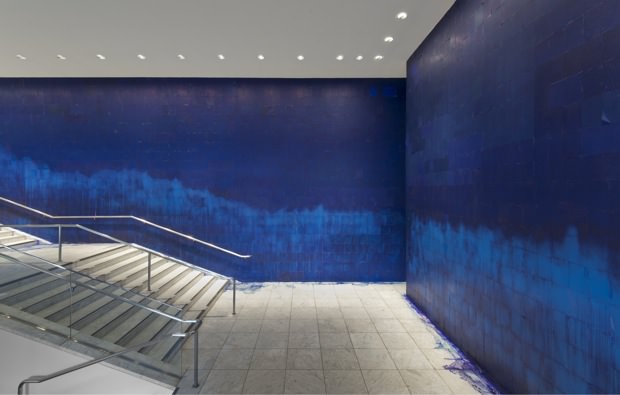
Installation View
WW: Yes, her work is quite stunning…
AE: I was just really taken by her approach to materials. Through relatively simple gestures, she’s able to conjure up extraordinarily, meaningful content. The wall is incredibly vibrant and beautiful. But there’s so much talk about in relationship to those materials: what they signify; technologies and how it evolves; and the history of painting too. It’s a piece that has contemporary content that has to do with society, technology and politics. It’s also rooted in the history of painting in particular.
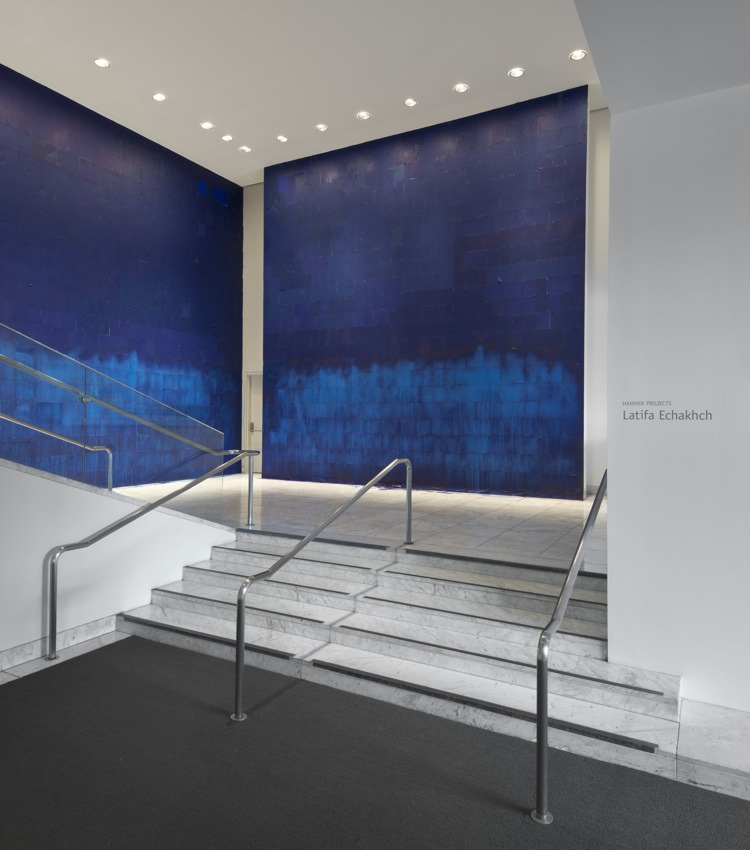
Installation View
WW: Can you elaborate on how it relates to the history of painting?
AE: For me, what’s really important is that when we think about abstract painting, often the dialogue will revolve around formal issues. How the work was made, the experimentation with materials…There’s a very long and important history of abstraction being associated with social and political content. Whether you are looking at Latin America, or moments in American history when prominence in abstraction, say in the 1950s, was used as a kind of propaganda tool to promote American values around the world.
If there is a position within the work, it’s that abstraction can be misunderstood as being only formal with no real subject matter. In fact, it often does have subject matter. In her case, it’s so much about how technology figures into political activism. With her reference to basically an obsolete technology and how it was used in previous moments in the history of political activism, she’s making a very specific reference. She’s thinking about the 1960s and activism around human rights, civil rights, women’s rights, student protests in the US and in France… that’s just fascinating that we can have a conversation about that while standing in this seemingly kind of just beautiful installation.
WW: Can you explain the overall concept of Hammer Projects?
AE: Hammer Projects is a series of exhibitions each year. We tend to do between seven and 10 annually. They are projects that take place in a single gallery or space. The lobby stairwell is the most visible and maybe the one that people know the best. The series is meant to focus on emerging artists that our audience may be unfamiliar with. In some cases, we will do a Hammer Project with a mid-career artist that has perhaps become less recognized or visible and try to refocus some attention on their work.
The series is also intended to be both a platform for local artists (we have always a fair number of Hammer Projects by Los Angeles-based artists) but also have international. It’s a great opportunity to bring artists from around the world to the Hammer to create work. In those cases, often it’s one of the first times an artist has exhibited in a US museum, not always, but they may be getting a lot of exhibitions in museums in other countries, but haven’t necessarily shown very much in the United States yet.





